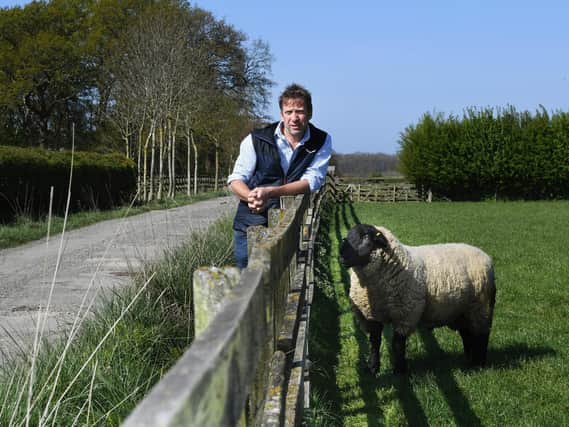An usual case of a cat with cowpox for the Yorkshire Vet Julian Norton


She had a horribly infected foot and her previous vet had suggested the solution might be to amputate the leg. But Jessie’s foot was only part of the problem because she also had scabby, sore and bleeding lesions all over her body, head and face.
Biopsies were required and I took her to theatre immediately to take little samples of her skin. The lab could do their thing and use powerful microscopes and skill to make a definitive diagnosis. I had my suspicions about the cause of Jessie’s lesions and we awaited the lab report with trepidation.
Advertisement
Hide AdAdvertisement
Hide AdUsually, results come by email, but a couple of days later the pathologist left an urgent message on my phone wanting to talk about the results.
He even gave his mobile number, so I knew the findings must be unusual. The last time I spoke by mobile phone with a pathologist about a complicated case was a few years ago, when I was treating a collie with a rare bone marrow condition.
Emailed pictures from down the microscope whizzed across the Atlantic for an expert’s opinion and I found myself talking to an American professor of clinical pathology.
We were both away from our workplaces: my end of the discussion was conducted by the frozen peas in Tesco. She was in Walmart in downtown Philadelphia.
Advertisement
Hide AdAdvertisement
Hide AdIn Jessie’s case, my tentative diagnosis of pemphigus foliaceus, a rare condition in itself, turned out to be (in all probability) completely wrong. The pathologist explained the nature of the lesions – cutaneous necrosis, intense exudative and neutrophilic inflammation. He suspected a different diagnosis altogether: Cowpox!
This is also rare and he went on to explain that feline cowpox usually appeared as a single lesion, often on the foot, and then spread, after a ten-day period of incubation and viraemia, to cause lesions all over the cat’s surface. “We need to do a PCR test to confirm, though,” he added. It was a sentence with which everyone amidst Covid-19 has become very familiar.
Whilst unusual, the appearance of cowpox seemed apt. At a time when the world anxiously awaits the development of a novel vaccine for coronavirus, it was the cowpox virus that led Edward Jenner to discover the concept of vaccination. Back in 1796, this pioneering scientist was decades ahead of his time. He discovered that milkmaids, who had been exposed to the relatively mild cowpox infection from milking affected cows, were immune to the deadly effects of the smallpox virus.
Cowpox served as an effective natural vaccine until a modern vaccine was created in the nineteenth century. It was a huge success and, following a World Health Organisation campaign in the 60s and 70s, smallpox achieved the status of being the only global human disease to be eradicated.
This evidence should buoy us all in these stricken times.
Advertisement
Hide AdAdvertisement
Hide AdIt turned out that Jessie had caught a rat a few weeks before and we assumed this to be the source of infection.
Whilst awaiting the PCR results, Jessie was following strict ‘self’ isolation to avoid spreading her infection. But there was another discussion to be had with Jessie’s owner.
“And cowpox is contagious to people, so you’ll need to exercise proper hygiene precautions,” I explained.
This bit was easy because nowadays we all know how to rid our skin of pesky virus particles: get the soap and start singing ‘happy birthday’.
Advertisement
Hide AdAdvertisement
Hide AdSupport The Yorkshire Post and become a subscriber today. Your subscription will help us to continue to bring quality news to the people of Yorkshire. In return, you'll see fewer ads on site, get free access to our app and receive exclusive members-only offers. Click here to subscribe.Link to use: https://www.yorkshirepost.co.uk/subscriptions
Comment Guidelines
National World encourages reader discussion on our stories. User feedback, insights and back-and-forth exchanges add a rich layer of context to reporting. Please review our Community Guidelines before commenting.